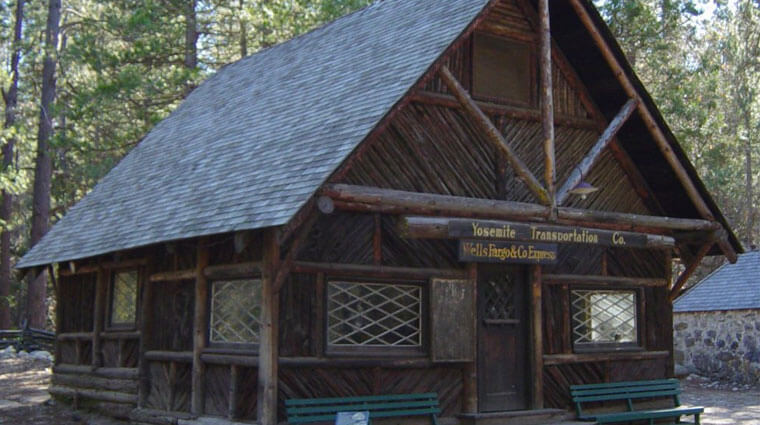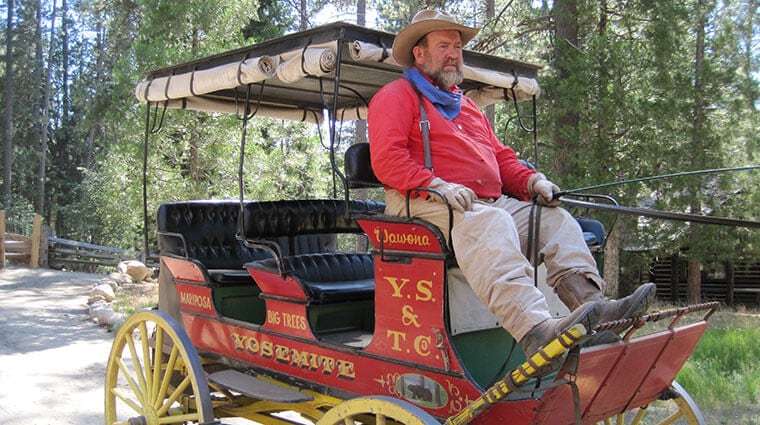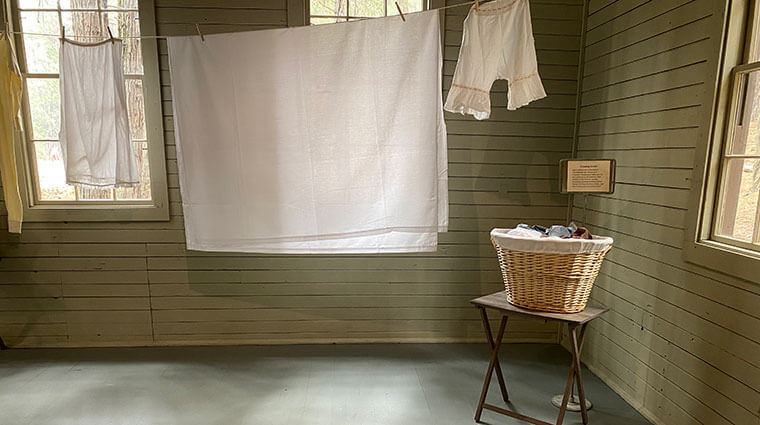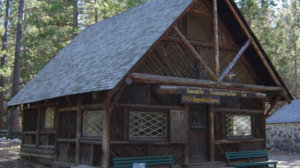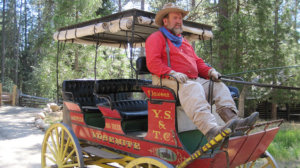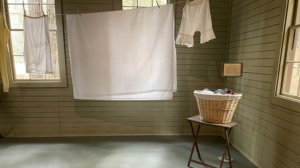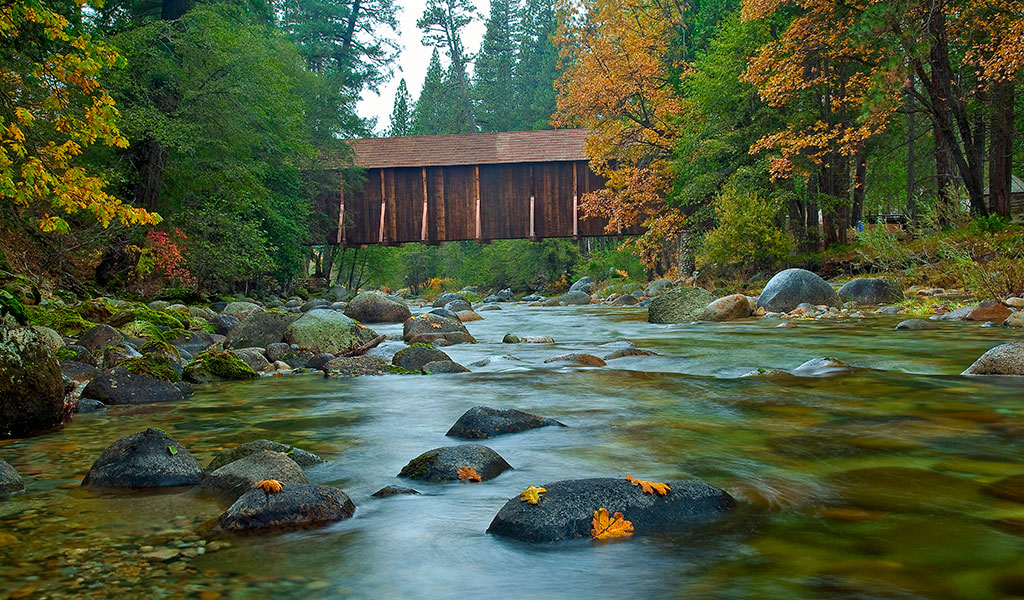
Yosemite History Center
Yosemite History Center
Southern Yosemite
8308 Wawona Rd, Wawona, CA 95389
(209) 372-0200
Visit Website
Overview
(Formerly the Pioneer History Center)
When you step into the Yosemite History Center in Wawona, you walk through a slice of time when horse-drawn wagons clattered across a covered wooden bridge. Rustic cabins sheltered a fascinating cast of characters during the era when Yosemite was becoming a National Park.
This collection of buildings was relocated to Wawona in the 1950s and 1960s, each with a unique story to tell. Outdoor interpretive signs tell the stories of these buildings year-round. You’re welcome to peer through the windows at the furnishings and various amenities of the time. Admire the cabin that the first person to climb Half Dome built, and peek in at an ultramodern transportation hub of the time.
An online tour of the Yosemite History Center will entertain history buffs with detailed information and fascinating anecdotes.
For example, when the 1915 Ranger Patrol Cabin was moved from its original location at Crane Flat to its new location in 1960, the old chimney was dismantled and rebuilt from original materials in the Yosemite History Center – twice. Unfortunately, the new mason’s work was initially dubbed too “neat”, and he was instructed to tear it down and rebuild it in a more rustic style, consistent with its initial construction.
Summer at the Yosemite History Center
In the summer months, the Yosemite History Center opens up and comes alive. You can visit exhibits inside the Chinese Laundry and Acting Superintendent’s Office, take a ride on a replica horse-drawn stage coach, or watch blacksmiths working iron over a coal forge. If you are lucky, you’ll also encounter some living history actors in period dress who can spin a few yarns about the old days.
The Yosemite History Center is well-worth an evening stroll, especially if you’re staying at the Wawona Hotel or one of the many Wawona vacation rental cabins, such as those operated by The Redwoods In Yosemite.
A Brief Tour of the Yosemite History Center
Although many people are drawn immediately to the Covered Bridge, don’t forget to visit some of the structures on the near side of the river as well.
The Gray Barn
The Gray Barn, built in 1920, is located to your right as you’re facing the Covered Bridge. It never held livestock. Instead, it served as a garage, initially providing a space for wagon construction and repair as well as shoeing horses. As horse-drawn carriages were replaced with automobiles, the barn became a service station known as the Wawona Garage.
On select dates in the summer, the Gray Barn now hosts traditional square dances with callers and “do-si-do” lessons.
Farm Equipment Display and Wagon Shelter
To your left is a display of old farm equipment and a Wagon Shelter that once protected a line of old stages.
The Chinese Laundry – The Yosemite History Center’s Newest Display
Beyond the restrooms at the end of the parking lot, and off in its own corner is the Yosemite History Center’s newest display. The Chinese Laundry was re-opened to the public in 2021, and tells the story of many Chinese immigrants who came to California in the mid-1800s.
During the summer, you can walk through the various exhibits inside to get a more detailed understanding of famous Chinese characters like Tie Sing whose cooking was so incredible that Sing Peak was named in his honor.
The Covered Bridge
Ok, now we’re ready to cross the Covered Bridge that welcomed visitors passing through Wawona from 1857 to 1931.
The deck and truss portion was built by Galen Clark, Yosemite’s first guardian. However, it wasn’t covered until 1879, after the Washburn brothers purchased Clark’s land.
The newly covered bridge was more protected from the elements, and also helped horses stay focused on the road rather than being distracted by the sometimes raging water beneath. However, according to a granddaughter, the Washburn brothers may have also been motivated by nostalgia for their native Vermont.
Once across the bridge, turn to your left. The first three buildings started out as homes for various Yosemite residents, each with a unique character and which tell a different story about the people that lived in Yosemite during that time.
The Artist Home
After you cross the Covered Bridge, the first building on your left is the Artist Home. It was built in 1903 by Yosemite artist Chris Jorgeson on the banks of the Merced River in Yosemite Valley. After the national park was established in 1917, the park service took over this old cabin and turned it into a government mess, and then into the first Yosemite Museum, the first in a national park. The building was then moved to Wawona in 1962.
The current Yosemite Museum in Yosemite Valley opened to the public in May 1926. It was the first building in the national park system specifically designed as a museum.
The Anderson Cabin
In the 1870s, George Anderson, the first person to climb Half Dome, built the Anderson Cabin in what is now Foresta. He would spend winters in this simple floorless cabin and his summers as a blacksmith in Yosemite Valley or industriously building many trails that are still in use by visitors today.
Hodgdon Homestead Cabin
Jeremiah Hodgdon and his family built the Hodgdon Homestead Cabin in 1879, as part of an effort to claim a portion of the Yosemite area under the Homesteading Act of 1864. The Hodgdons owned a ranch in the Sierra foothills, and built this two-story log cabin near what is now Aspen Valley to claim summer pasture land for their cattle. Naturally, they, and other homesteaders, opposed the creation of the National Park because it forced them to sell their land. Historian Margaret Schlichtmann provided historic furnishings and would play the role of Mrs. Hodgdon, telling stories from her porch during the summer as the first living history program.
Blacksmith Shop
Beyond the Hodgdon Homestead Cabin, you’ll find a working blacksmith shop.
The Yosemite History Center’s Blacksmith Shop represents an essential service of the era. Not only were they essential in keeping horses shod, they also worked to repair the stage coaches used to transport people.
Stop by in summer to see if you can catch modern-day blacksmiths working over the coal-fired forge.
The Cavalry Office / Acting Superintendent’s Headquarters
Beyond the Blacksmith shop, you come to a cluster of old government buildings.
The Cavalry Office building served as the office of the Acting Superintendent, and the headquarters of the U.S. Cavalry troops who were assigned to protect the fledgling national park. The headquarters moved to Yosemite Valley in 1906, and the site of the old headquarters is now Wawona Campground.
An old army tack room is located behind the Cavalry Office.
Ranger Patrol Cabin / Crane Flat Cabin
The 1910 Ranger Patrol Cabin from Crane Flat contains furnishings that would have been common for a ranger in the early 1920s. The first person to live in this building was Jean Witter, one of a series of college boy rangers that bridged the gap between when the US. Cavalry pulled out on 1914 and the National Park Service’s formation in 1917.
Degnan Bakery
Tucked in behind the Ranger Patrol Cabin you’ll find the Degnan Bakery. John and Bridget Degnan settled in Yosemite Valley in 1884, and while John worked as a laborer and caretaker, Bridget supplemented their income with fresh baked bread. Originally attached behind the Degnan house near the Chapel in Old Upper Village in Yosemite Valley, this building was relocated to the Yosemite History Center in the 1980s.
Degnan’s remained an independent family business until 1974 when it was purchased by the Yosemite Park and Curry Company, and you can still pick up a delicious deli sandwich at Degnan’s Kitchen in Yosemite Valley today.
The Wells Fargo Office
In 1910 the Yosemite Valley Railroad Company constructed what was then an ultramodern building in the Old Upper Village in Yosemite Valley to act as a transportation hub for Yosemite visitors arriving by railroad. Mr. and Mrs. George Farber, acted as the Wells Fargo agents and moved into the associated living quarters in 1913. The Wells Fargo Office allowed visitors to purchase transportation or lodging reservations, make phone calls and send telegraphs. It even had electric lights!
In summer, you can sometimes still purchase horse-drawn stage rides here.
Powderhouse and Jail
Before returning again to the Covered Bridge, stop and poke your head inside the old Powderhouse and Jail.
John Degnan built this compact structure in his role as an employee of the State of California. The thick stone walls and the six inches of sand in the ceiling were originally designed to protect the black powder and dynamite stored there from fire.
Later, the powderhouse was converted into a jail. Unfortunately, it was a poor one. In 1915, two young car thieves escaped by digging out the mortar between rocks with the leg of a rickety steel frame cot inside. They said it was so easy that they decided to wait until after breakfast to make their break. Eventually they were recaptured, and shackled to the corners as additional security measures.
